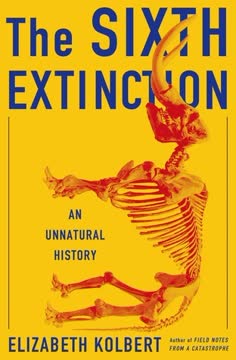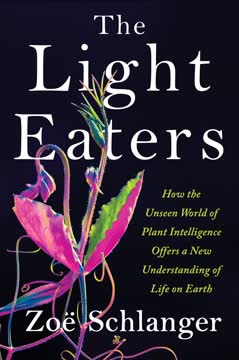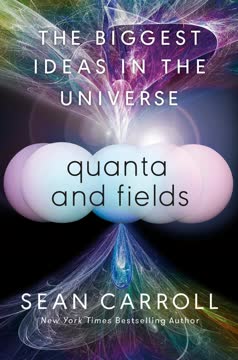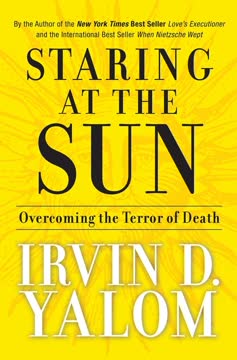Key Takeaways
1. Scientific blunders can lead to groundbreaking discoveries
"Blunders are not born equal, and the blunders of the five scientists on my list are rather different in nature."
Productive mistakes. Scientific progress often emerges from errors and missteps. The blunders of great scientists like Darwin, Kelvin, Pauling, Hoyle, and Einstein were not mere failures, but catalysts for deeper understanding and revolutionary discoveries. These errors challenged existing paradigms, sparked debates, and ultimately advanced scientific knowledge.
Types of blunders:
- Darwin: Not realizing the full implications of a hypothesis
- Kelvin: Ignoring unforeseen possibilities
- Pauling: Overconfidence bred by previous success
- Hoyle: Obstinate advocacy of dissent from mainstream science
- Einstein: Misguided sense of aesthetic simplicity
These blunders highlight the complex nature of scientific inquiry and the importance of challenging assumptions. They demonstrate that even the most brilliant minds can make mistakes, and that the scientific process is inherently self-correcting.
2. Darwin's theory of evolution faced challenges from blending inheritance
"If not for false starts and blind alleys, scientists would be traveling for too long down too many wrong paths."
Inheritance conundrum. Darwin's theory of evolution by natural selection was groundbreaking, but it faced a significant challenge from the prevailing theory of blending inheritance. This theory suggested that offspring would be a blend of their parents' traits, which would dilute any advantageous variations over time.
Darwin's blunder and resolution:
- Failed to recognize the incompatibility of blending inheritance with natural selection
- Fleeming Jenkin pointed out this flaw in 1867
- Mendel's work on genetics (rediscovered in 1900) provided the solution
- Discrete, particulate inheritance allowed for the preservation of variations
The resolution of this blunder ultimately strengthened the theory of evolution, demonstrating how scientific ideas can evolve and improve through criticism and new discoveries.
3. Lord Kelvin's miscalculation of Earth's age hindered evolutionary theory
"Mathematics may be compared to a mill of exquisite workmanship, which grinds you stuff of any degree of fineness; but, nevertheless, what you get out depends upon what you put in."
Age discrepancy. Lord Kelvin's calculation of Earth's age as 20-400 million years old conflicted with the vast timescales required by Darwin's theory of evolution. This apparent contradiction posed a significant challenge to the acceptance of evolutionary theory.
Kelvin's blunder:
- Assumed Earth was a uniformly cooling solid body
- Ignored the possibility of internal heat sources (radioactivity)
- Failed to consider convection in the Earth's mantle
The resolution came from:
- Discovery of radioactivity as a heat source
- Understanding of mantle convection
- Improved dating techniques
This blunder highlights the importance of considering all possible factors and the dangers of overconfidence in one's assumptions, even for renowned scientists.
4. Linus Pauling's DNA blunder paved the way for Watson and Crick
"Failure hovers uncomfortably close to greatness. What matters now are his perfections, not his past imperfections."
Race for the double helix. Linus Pauling, a brilliant chemist, made a significant error in proposing a triple-helix structure for DNA. This mistake, however, ultimately spurred Watson and Crick to intensify their efforts, leading to the correct double-helix model.
Pauling's blunder stemmed from:
- Rushing to publish without sufficient data
- Overlooking basic chemical properties of DNA
- Overconfidence from previous successes in protein structure
The resolution:
- Watson and Crick's access to better X-ray crystallography data
- Their focus on base-pairing and complementarity
- Collaboration and critical discussion of ideas
This episode illustrates how scientific competition can drive progress and how even errors by leading scientists can motivate others to find the correct solution.
5. Fred Hoyle's steady state theory contributed to cosmology despite being wrong
"To achieve anything really worthwhile in research, it is necessary to go against the opinions of one's fellows."
Cosmic controversy. Fred Hoyle's steady state theory of the universe, proposing continuous creation of matter, was ultimately disproven. However, his work significantly advanced cosmology and astrophysics.
Hoyle's contributions despite his blunder:
- Developed theories of stellar nucleosynthesis
- Predicted the triple-alpha process in star cores
- Coined the term "Big Bang" (ironically, for the theory he opposed)
The steady state theory's demise:
- Discovery of the cosmic microwave background
- Observations of galactic evolution
- Quasar distribution
This case demonstrates how even incorrect theories can drive scientific progress by stimulating debate, research, and the development of new observational techniques.
6. Einstein's "biggest blunder" became a cornerstone of modern cosmology
"Einstein's original gravity equation was correct, and changing it [to introduce the cosmological constant] was a mistake."
Cosmic repulsion. Einstein introduced the cosmological constant to his equations of general relativity to create a static universe model. He later called this his "biggest blunder" when the expanding universe was discovered.
Einstein's blunder and its resurrection:
- Initially added to balance gravity and create a static universe
- Removed after Hubble's discovery of cosmic expansion
- Reintroduced in modern cosmology to explain accelerating expansion
Implications:
- Demonstrates the danger of adhering to preconceived notions
- Highlights the importance of observational evidence in theory development
- Shows how "mistakes" can sometimes anticipate future discoveries
This episode illustrates the complex relationship between theory and observation in science, and how ideas once discarded can find new relevance in light of new evidence.
7. The scientific method thrives on errors and corrections
"Conviction is a good motive, but a bad judge!"
Self-correcting process. The scientific method is inherently designed to identify and correct errors. The blunders of even the most celebrated scientists demonstrate the strength of this approach.
Key aspects of scientific self-correction:
- Peer review and criticism
- Replication of experiments and observations
- Continuous refinement of theories based on new evidence
- Openness to alternative explanations
Benefits of acknowledging scientific errors:
- Encourages humility and skepticism
- Promotes critical thinking and debate
- Drives innovation and discovery
- Strengthens public trust in the scientific process
The history of science shows that progress often comes from challenging established ideas and learning from mistakes. This dynamic process of error and correction is fundamental to scientific advancement and our ever-expanding understanding of the universe.
Last updated:
FAQ
What's Brilliant Blunders about?
- Focus on scientific errors: Brilliant Blunders by Mario Livio explores significant mistakes made by renowned scientists and how these errors contributed to scientific progress.
- Journey over achievements: The book emphasizes the thought processes and obstacles faced by scientists, rather than just their successes.
- Themes of evolution and cosmos: It connects these blunders to broader themes in the evolution of life, Earth, and the universe, showing how errors can lead to breakthroughs.
Why should I read Brilliant Blunders?
- Insight into discovery: The book offers a unique perspective on how mistakes are integral to the scientific process, making it valuable for anyone interested in science.
- Engaging storytelling: Livio combines historical anecdotes with scientific concepts, making complex ideas accessible and engaging.
- Lessons from great minds: Readers learn from the experiences of scientists like Darwin and Einstein, understanding that failure is often a stepping stone to success.
What are the key takeaways of Brilliant Blunders?
- Mistakes are essential: Significant scientific advancements often arise from errors, reinforcing that blunders are part of the learning process.
- Human limitations: Livio discusses psychological and cognitive factors contributing to these blunders, highlighting human limitations in scientific reasoning.
- Interconnectedness of science: The blunders of individual scientists are shown to influence various fields, leading to a deeper understanding of life and the universe.
What are the best quotes from Brilliant Blunders and what do they mean?
- “Experience is the name everyone gives to their mistakes.”: This Oscar Wilde quote emphasizes that mistakes are fundamental to learning and growth, especially in science.
- “The road to triumph is paved with blunders.”: Livio illustrates that significant achievements often come after a series of errors, underscoring perseverance's value.
- “Certainty generally is illusion.”: This reflects the idea that absolute certainty in science is rare, and questioning and revising beliefs is crucial for progress.
Who are the main scientists discussed in Brilliant Blunders?
- Charles Darwin: Explored for his misunderstanding of blending inheritance, which nearly undermined his theory of natural selection.
- Albert Einstein: Examined for his mistakes, particularly the cosmological constant, which he later called his "biggest blunder."
- Linus Pauling: Known for his erroneous triple helix model of DNA, illustrating how previous successes led to overconfidence.
What was Darwin's major blunder in Brilliant Blunders?
- Blending inheritance misunderstanding: Darwin adopted the blending theory of inheritance, which suggested offspring are a mix of parental traits, undermining natural selection.
- Jenkin's criticism: Fleeming Jenkin pointed out that blending inheritance would dilute advantageous traits, challenging natural selection's effectiveness.
- Consequences for evolution: This misunderstanding could have negated Darwin's insights, highlighting the importance of accurate heredity theories in evolutionary biology.
How did Lord Kelvin's calculations impact the age of the Earth?
- Thermal conductivity assumptions: Kelvin calculated Earth's age based on its cooling rate, assuming uniform thermal conductivity throughout its layers.
- Age estimate: His calculations suggested Earth was between 20 million and 400 million years old, significantly lower than the actual age of about 4.5 billion years.
- Conflict with geology: Kelvin's estimates created tension between physicists and geologists, clashing over Earth's history implications.
What was Linus Pauling's blunder regarding DNA?
- Triple helix model: Pauling proposed a three-stranded structure for DNA, fundamentally incorrect due to a misunderstanding of basic chemical principles.
- Ignoring Chargaff's rules: He overlooked Erwin Chargaff's findings that adenine and thymine, and guanine and cytosine, are equal, suggesting a double-stranded structure.
- Impact on molecular biology: Pauling's error delayed the correct understanding of DNA's structure, resolved by Watson and Crick's double helix model.
How does Brilliant Blunders relate to the concept of evolution?
- Evolution through mistakes: The book illustrates that many scientific advancements in understanding evolution arose from key figures' blunders.
- Interconnected theories: Livio connects mistakes of scientists like Darwin and Pauling to the broader narrative of evolutionary theory.
- Learning from errors: The narrative reinforces that recognizing and analyzing mistakes is crucial for scientific progress, especially in evolutionary biology.
What psychological factors contribute to scientific blunders in Brilliant Blunders?
- Cognitive biases: Livio discusses how biases like overconfidence and the illusion of certainty lead to significant errors in judgment.
- Motivated reasoning: Emotional attachments to theories can cloud judgment, making it difficult to accept contradictory evidence.
- Learning from failure: Understanding these factors helps scientists navigate thought processes and improve decision-making in knowledge pursuit.
What is the significance of the cosmological constant in Brilliant Blunders?
- Represents a major concept: Introduced by Einstein for a static universe, later deemed unnecessary after cosmic expansion discovery.
- Connection to dark energy: Now associated with dark energy, believed to drive the universe's accelerated expansion.
- Symbol of scientific humility: Emphasizes openness to new ideas and evidence, with Einstein's journey reflecting adaptability's need in scientific thought.
How did each scientist's blunder contribute to scientific progress?
- Darwin's misunderstanding: Led to the modern synthesis, integrating genetics with evolutionary biology, strengthening evolution theory.
- Kelvin's age calculation: Prompted further research into geology and radiometric dating, leading to a more accurate understanding of Earth's history.
- Pauling's DNA model: Spurred Watson and Crick to discover the correct double helix structure, advancing molecular biology.
Review Summary
Brilliant Blunders explores mistakes made by renowned scientists like Darwin, Einstein, and others. While some readers found it insightful and well-researched, others criticized the loose definition of "blunders" and the book's uneven pacing. Many appreciated the humanization of great scientists and the exploration of how errors contribute to scientific progress. However, some felt the technical content was too advanced for casual readers. Overall, opinions were mixed, with some praising the book's depth and others finding it tedious or poorly structured.
Similar Books










Download PDF
Download EPUB
.epub digital book format is ideal for reading ebooks on phones, tablets, and e-readers.







